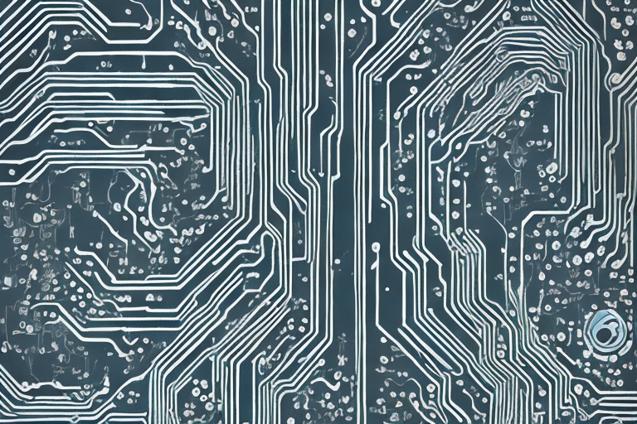
Troubleshoot common electronics issues on your boat with our guide, ensuring safe and enjoyable sailing experiences for you and your family.
How to Troubleshoot Common Electronics Issues
Welcome to our unique and adventurous website, dedicated to those who are leaving the rat race behind, purchasing a boat, and setting sail to explore the world with their families. Our site is a comprehensive resource for all things related to this lifestyle, providing practical advice, personal stories, and insightful guides to help our readers navigate this exciting journey.
In this article, we will discuss how to troubleshoot common electronics issues that you may encounter while sailing. Electronics and navigation systems are essential for a safe and enjoyable sailing experience, but they can also be prone to various problems. By learning how to identify and fix these issues, you can ensure that your boat remains in top condition and that your family’s adventures continue smoothly.
Table of Contents
- Introduction to Marine Electronics
- Common Electronics Issues
- Troubleshooting Techniques
- Preventive Measures
- Conclusion
Introduction to Marine Electronics
Before diving into troubleshooting, it’s essential to understand the basics of marine electronics. These systems are designed to withstand harsh marine environments and provide critical information for navigation, communication, and safety. Some of the most common marine electronics include:
- GPS/chartplotters
- Autopilots
- VHF radios
- AIS (Automatic Identification System)
- Radar
- Depth sounders and fishfinders
- Wind, speed, and direction instruments
Each of these systems plays a vital role in ensuring a safe and enjoyable sailing experience. However, they can also be prone to various issues, which we will discuss in the next section.
Common Electronics Issues
Marine electronics can experience a range of problems, from simple glitches to more complex issues. Some of the most common electronics issues include:
Power Issues
One of the most common problems with marine electronics is power-related issues. This can include:
- Insufficient power supply
- Loose or corroded connections
- Damaged wiring
- Faulty switches or circuit breakers
Signal Interference
Signal interference can cause problems with GPS, VHF radios, and other communication systems. This can be due to:
- Nearby electronic devices
- Antenna issues
- Damaged or improperly installed cables
Software and Firmware Issues
Outdated or corrupted software and firmware can cause various issues with marine electronics, such as:
- Inaccurate or missing data
- Slow or unresponsive systems
- Incompatibility with other devices
Water Damage
Marine electronics are designed to withstand harsh environments, but water damage can still occur, especially if the equipment is not properly maintained or installed. This can lead to:
- Short circuits
- Corrosion
- Component failure
Troubleshooting Techniques
When faced with an electronics issue, it’s essential to approach the problem methodically and systematically. Here are some general troubleshooting techniques that can help you identify and fix common electronics issues:
1. Consult the User Manual
The user manual is an invaluable resource for understanding how your marine electronics work and how to troubleshoot common issues. Make sure to keep a copy of the manual on board and refer to it when needed.
2. Check for Power Issues
If an electronic device is not working, the first step is to check for power issues. Ensure that the device is receiving power by checking the connections, switches, and circuit breakers. Look for any signs of damage or corrosion and clean or replace any affected components.
3. Inspect Wiring and Connections
Loose or damaged wiring can cause a range of issues with marine electronics. Inspect all wiring and connections for signs of wear, corrosion, or damage. Tighten any loose connections and replace any damaged wiring.
4. Test for Signal Interference
If you suspect that signal interference is causing problems with your electronics, try turning off nearby devices to see if the issue resolves. Check the antenna and cables for any damage or improper installation.
5. Update Software and Firmware
Keeping your marine electronics up-to-date with the latest software and firmware can help prevent and resolve various issues. Check the manufacturer’s website for updates and follow the instructions for installing them.
6. Perform a Factory Reset
If you’re still experiencing issues after trying the above troubleshooting techniques, performing a factory reset may help. This will restore the device to its original settings and can often resolve software-related issues. Consult the user manual for instructions on how to perform a factory reset.
Preventive Measures
Prevention is always better than cure, and there are several steps you can take to minimize the risk of electronics issues on your boat:
-
Regular Maintenance: Regularly inspect and clean your marine electronics to prevent corrosion and damage. This includes checking connections, wiring, and antennas for any signs of wear or corrosion.
-
Proper Installation: Ensure that all electronics are installed correctly and securely to minimize the risk of water damage and signal interference. Consult the user manual or a professional installer for guidance.
-
Keep Software and Firmware Updated: Regularly update your marine electronics with the latest software and firmware to ensure optimal performance and compatibility with other devices.
-
Use Quality Components: Invest in high-quality marine electronics and components to minimize the risk of issues. This includes using marine-grade wiring, connectors, and antennas.
-
Protect from Water Damage: Take steps to protect your marine electronics from water damage, such as using waterproof cases, sealing openings, and regularly inspecting for leaks.
Conclusion
Marine electronics are essential for a safe and enjoyable sailing experience, but they can also be prone to various issues. By understanding the common problems and learning how to troubleshoot them, you can ensure that your boat remains in top condition and that your family’s adventures continue smoothly.
Remember to consult the user manual, regularly maintain and update your electronics, and invest in quality components to minimize the risk of issues. And if you’re ever unsure about how to fix a problem, don’t hesitate to consult a professional for assistance.